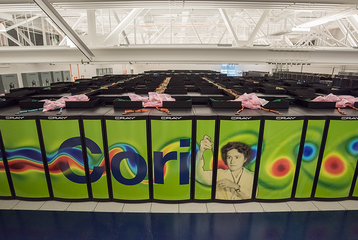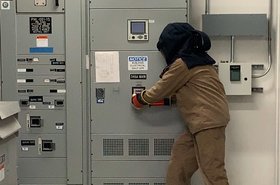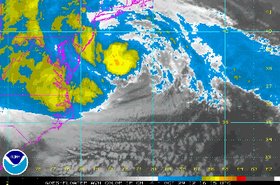NERSC has finalized its contract with Cray to install the Perlmutter supercomputer.
Based on the Shasta architecture, it will use the Zen 3 based AMD Epyc CPUs ("Milan") and next-generation Nvidia Tesla GPUs. Perlmutter, with these equipped, will be better suited for nuclear fusion simulations, climate projections, and material and biological research. It is predicted to reach approximately 100 petaflops of peak processing power.
The new HPC will feature 24 cabinets and provide three to four times the capability of NERSC’s current flagship supercomputer, Cori.
Perlmutter will be deployed at National Energy Research Scientific Computing Center in two phases: the first set of 12 cabinets, featuring GPU-accelerated nodes, will arrive in late 2020 and the second set, featuring CPU-only nodes, will arrive in mid-2021. A 35-petabyte all-flash Lustre-based file system using HPE’s ClusterStor E1000 hardware will also be deployed in late 2020.
The supercomputer is named after American astrophysicist Saul Perlmutter.
Getting prepared
To get users ready for the increase in power from Perlmutter and future exascale systems, NERSC has a new testing program called the NERSC Exascale Science Applications Program (NESAP), which involves early access to new hardware and prototype software tools for performance analysis, optimization, and training.
Jack Deslippe, who leads NESAP, said: “We are excited about the progress our applications teams are making optimizing their codes for current and upcoming GPUs.
“Across all of our science areas we are seeing applications where a V100 GPU on Cori is outperforming a CPU Cori node by 5x or greater. These performance gains are the result of work being done by tightly coupled teams of engineers from the applications, NERSC, Cray, and Nvidia.
“The enthusiasm for GPUs we are seeing from these teams is encouraging and contagious.”
NERSC is a US Department of Energy (DOE) HPC center located at Lawrence Berkeley National Laboratory, California.
More than 7,000 scientists use NERSC's services to conduct research on combustion, climate modeling, fusion energy, materials science, physics, chemistry, and computational biology.




